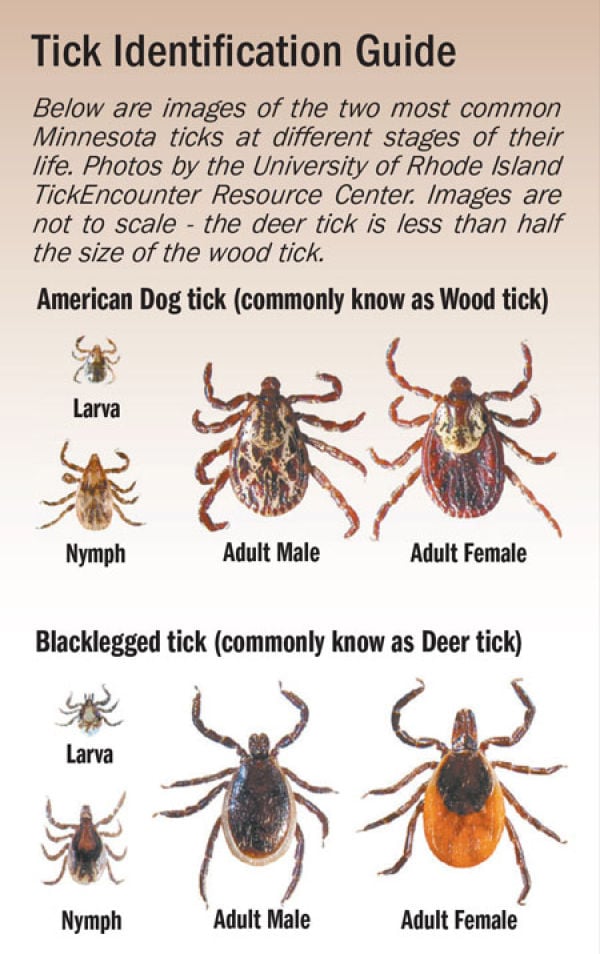

Hard ticks are ticks that have visible mouthparts and a scutum, a shield-like hard portion on the body right under the head like the species above.
#Deer tick vs wood tick how to
While this guide cannot identify every single tick species individually, we can provide you with a comprehensive guide to identifying the two families that tick species fall under and a guide to identifying the most common ticks found in North America.Īdditionally, this guide includes links to articles detailing the most common tick species found in each state of the U.S., as well as resources for how to deal with most tick-related issues! Tick Types: Hard Ticks And Soft Ticks There are over 900 species of ticks, grouped into two families. While most ticks do not cause lasting harm, some of these parasitic bloodsuckers are vectors for deadly illnesses. But we absolutely must know how to identify them. Believe it or not, there are nine hundred known species of ticks found worldwide, and knowing this is enough to give anyone nightmares. Adults can even remain active in close to freezing temperatures.The only thing worse than the idea of a tick is just how many species of them exist.

Then, larva will overwinter, waiting until spring to molt into the next life stage, nymphs. In summer, larva will attach to white-footed mice or small birds to feed for a few days. These eggs develop into larva that will then seek out a host to feed on. Once spring arrives, female deer ticks will lay hundreds of eggs. Females will drop from their host and remain active throughout winter, while males will usually die shortly after mating. In late fall and over winter, adult male and female deer ticks meet on their preferred host, the white-tailed deer, and mate. Predatorsīecause of their small size, deer ticks are rarely found or eaten by potential predators such as birds. Adult females will feed for 3 to 7 days on the blood of larger mammals like deer and humans. Nymphs will feed for 3 to 4 days on the blood of small to medium sized mammals, and sometimes humans. Larvae will usually feed for 3 to 5 days on the blood of small birds and white-footed mice. Feedingĭeer ticks feed only at three points in their life, as larvae before they molt into nymphs, as nymphs before they molt into adults and as adults before they lay eggs. At all these life stages, feeding changes the color and size of the tick’s abdomen, which can become shades of yellow to dark bluish-grey. Adult females have reddish-brown abdomens, while males have brownish-black abdomens. Nymphs are slightly larger, about the size of a poppy seed, and have dark brown bodies. Distinct from other life stages, larval ticks-which are not much bigger than the period at the end of this sentence-are three legged and have translucent abdomens. These characteristics can be used to identify deer ticks at multiple stages of their life cycle.Ī deer tick’s abdomen will look different depending on its age, sex and whether it has recently eaten. Deer ticks have eight dark legs, a dark head and a dark spot behind their head, called a dorsal shield. The deer tick, sometimes known as the black-legged tick, is a small, dark brown and black colored tick that usually only reaches 3 millimeters in size in adulthood.


 0 kommentar(er)
0 kommentar(er)
